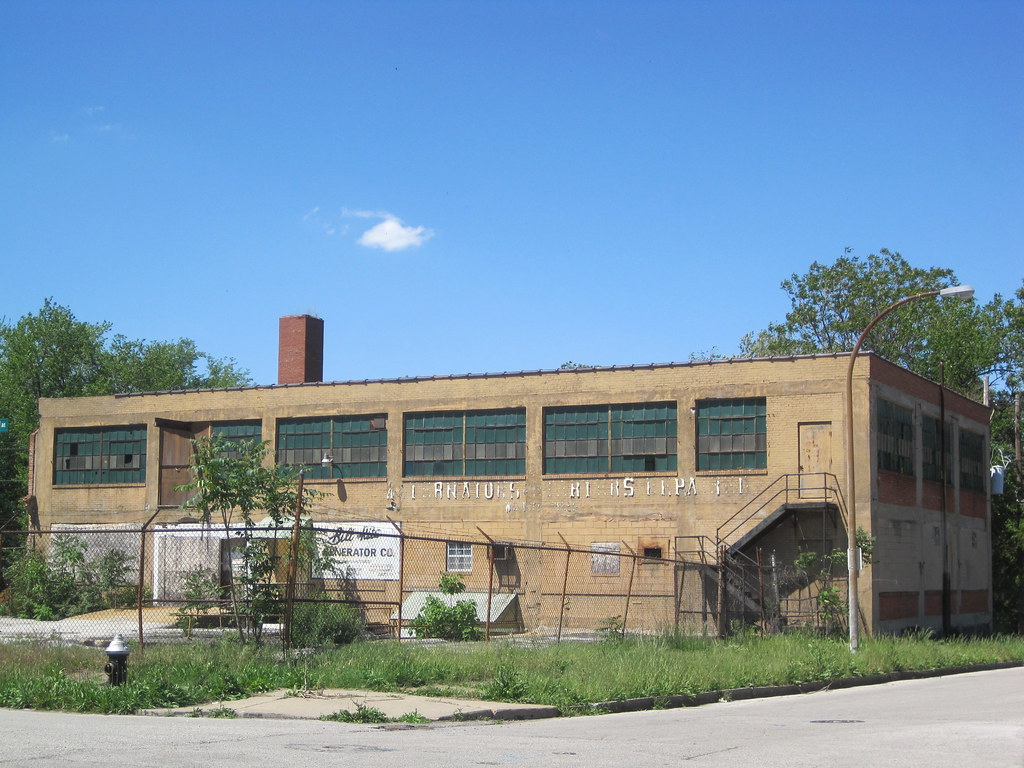 This two-story reinforced concrete industrial building stands on N. 25th Street just north of Sullivan Avenue in St. Louis Place. It is owned by Northside Regeneration LLC. Beyond some concrete block infill of first floor window openings and a painted southern elevation, the building does not look much different than it did when built some 90 years ago. In the parlance of the National Register for Historic Places, the building substantially retains its integrity.
This two-story reinforced concrete industrial building stands on N. 25th Street just north of Sullivan Avenue in St. Louis Place. It is owned by Northside Regeneration LLC. Beyond some concrete block infill of first floor window openings and a painted southern elevation, the building does not look much different than it did when built some 90 years ago. In the parlance of the National Register for Historic Places, the building substantially retains its integrity.Of course, the building is more isolated than ever, and across 25th Street is the hulking Sullivan Place building with its gated grounds. No one could claim that the building is essential to preserving a historic built landscape. So why would anyone preserve it?
The first reason would be moral imperative. One version of that is tracing the building's use to a significant company or product. That is unlikely. Another moral imperative, which all good people now claim to endorse, is the mantra of "sustainability": demolition is like driving an Escalade to work every day. Right? A tangential moral imperative is that with each demolition, we lose more of St. Louis itself, thus diminishing the physical city itself. Readers know that I meditate on this idea frequently, and sometimes inconclusively.
The other reason that this building would be saved is economic. Someone may find a new purpose, or resurrect an old purpose, for the building. Reuse of this building might reduce capital needs of start-up. That's the kind of reuse that I would love to see envisioned for a relic like this. More likely, though, redevelopment here will be incentive-driven. In fact, it already is.
The irony is that not long ago this building was still in continuous use, despite loss of context, age and general neighborhood decline. It was just an industrial building in a neighborhood. Now, due to conjoined acts of government and capital, its existence is in question. Many prettier buildings are in the same situation, but advocacy is far easier for them. Who sees the potential here? Well, the potential was already realized. Don't forget that. Jobs were located here. Taxes generated. Not much is required to return the building to taxable production. Perhaps in our political economy those facts justify preservation better than any other.





2 comments:
I like the building. To save it requires a viable use. Industrial or lofts, really doesn't matter. The problem, big picture, is simply too much supply and too little demand. Going from a city of 800K to 350K and the numbers simply don't work, for saving every old building, even if we seem to have lost nearly half already!
This mantra needs to be repeated over and over a million times. Existing commercial and industrial buildings reduce the cost of start-up for small businesses. Retaining usable buildings should be the goal of all good and responsible people. Thank you, Michael!
Post a Comment